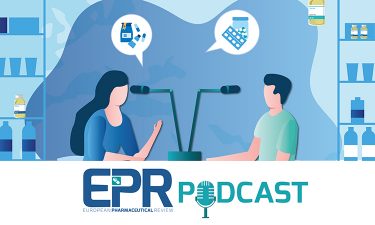European Pharmaceutical Review podcast

EPR Podcast Episode 18 – Embracing continuous manufacturing – Trish Hurter, Lyndra Therapeutics

Continuous manufacturing (CM) is recognised industry wide as a more efficient and flexible manufacturing approach than batch manufacturing. Yet, despite encouragement from regulators and being standard in many industries, the pharmaceutical sector has been quite slow to adopt continuous manufacturing techniques.
In this episode, Patricia Hurter, CEO, Lyndra Therapeutics, explores the potential of continuous manufacturing, discussing some of the benefits, challenges and lessons learned.

Dr Patricia Hurter serves as CEO of Lyndra Therapeutics.
Prior to joining Lyndra in 2019, Trish spent 15 years at Vertex, where her team designed and built the world’s first fully continuous drug product manufacturing plant, approved by the US Food and Drug Administration (FDA) in 2015.
Reflecting on this project, Trish highlights the importance of designing a machine that is “flexible enough to make multiple products,” as well as the importance of being “all in” if choosing to adopt a CM approach. She also talks about Lyndra’s pipeline, developments in process analytical technology (PAT) and the how CM is expected to change in future.
Lyndra’s pipeline and how it is embracing CM…
“This is not your average tablet, so you can’t manufacture it using typical manufacturing methods”
Lyndra’s lead product is oral weekly risperidone for schizophrenia and bipolar disorder. Trish describes this as a ‘star-shaped dosage from that folds up into a capsule’.
Once this capsule reaches the stomach, the dosage form unfolds into a flat, flexible, star-shaped structure that resists passage out of the stomach while the drug contained in each of the arms diffuses out. After drug release, linkers that connect the arms to the core soften and disintegrate, allowing the dosage form to break down and be excreted.1
“This is not your average tablet, so you can’t manufacture it using typical manufacturing methods,” explains Trish, noting how assembly of the dosage forms has transitioned from ‘humans and tweezers’ to ‘robotics and automation’’ since she joined the organisation in 2019.
“We have pilot scale machines right now that do what I would call discontinuous continuous operations. Each part of it is continuous, but humans take the product from step A to step B,” Trish stated. She adds that a fully automated machine is being built in Germany, scheduled for delivery later this year.
What have regulators said about continuous manufacturing?
“Now regulatory bodies have made expectations clear, I think the pharmaceutical industry will switch over to CM,”
Despite perceptions, Trish does not believe that regulation is a barrier to adoption of continuous manufacturing.
Citing a recent paper published by the FDA in the International Journal of Pharmaceuticals, she notes how CM applicants had shorter times to approval and market as compared to similar batch applications. Products of CM tended to reach the market sooner after regulatory filing, leading to potential $171–537 million in early revenue benefit, this research found.2
“People worry a lot about the regulatory stuff. That was one of the reasons why bigger pharmaceutical companies didn’t jump [into continuous manufacturing] with both feet,” says Trish.
Now regulatory bodies have made expectations clear, she believes the pharmaceutical industry will switch over,” she adds.
Making the switch from batch to CM
One question for pharmaceutical companies is whether to switch legacy batch manufacturing to continuous.
“If you’ve got a legacy product and you’re only making a few batches a year, the additional effort to go back and turn that into continuous is probably just not worth it,” Trish notes. “I would argue that for new products, however, it makes a lot of sense to start off by doing manufacturing continuously.”
This is even an option for smaller companies, as several contract manufacturers now have continuous manufacturing capabilities in-house.
Reflections on being a woman in pharma…
With International Women’s Day in March, Trish reflects on her career in pharma and offers advice for those looking to enter the sector.
“Being in the science and engineering field is an exciting place for women to be these days. But you have to find companies and leaders that will help you thrive,” says Trish.
Her other top tips for success include staying connected, informal mentoring and ensuring you make time for yourself.
“Divide your time not only between your family and work, but make sure you also devote some time to doing something that you really love for yourself,” she adds.
References
- Kanasty R, Low S, Bhise N, et al. A pharmaceutical answer to nonadherence: Once Weekly Oral Memantine for Alzheimer’s Disease. JCR. 2019; 303:34–41.
- Fisher AC, Liu W, Schick A, et al. An audit of pharmaceutical continuous manufacturing regulatory submissions and outcomes in the US. Int. J. Pharm. 2022; 622:121778.
The post <em>EPR</em> Podcast Episode 18 – Embracing continuous manufacturing – Trish Hurter, Lyndra Therapeutics appeared first on European Pharmaceutical Review.






 Visit Podcast Website
Visit Podcast Website RSS Podcast Feed
RSS Podcast Feed Subscribe
Subscribe
 Add to MyCast
Add to MyCast